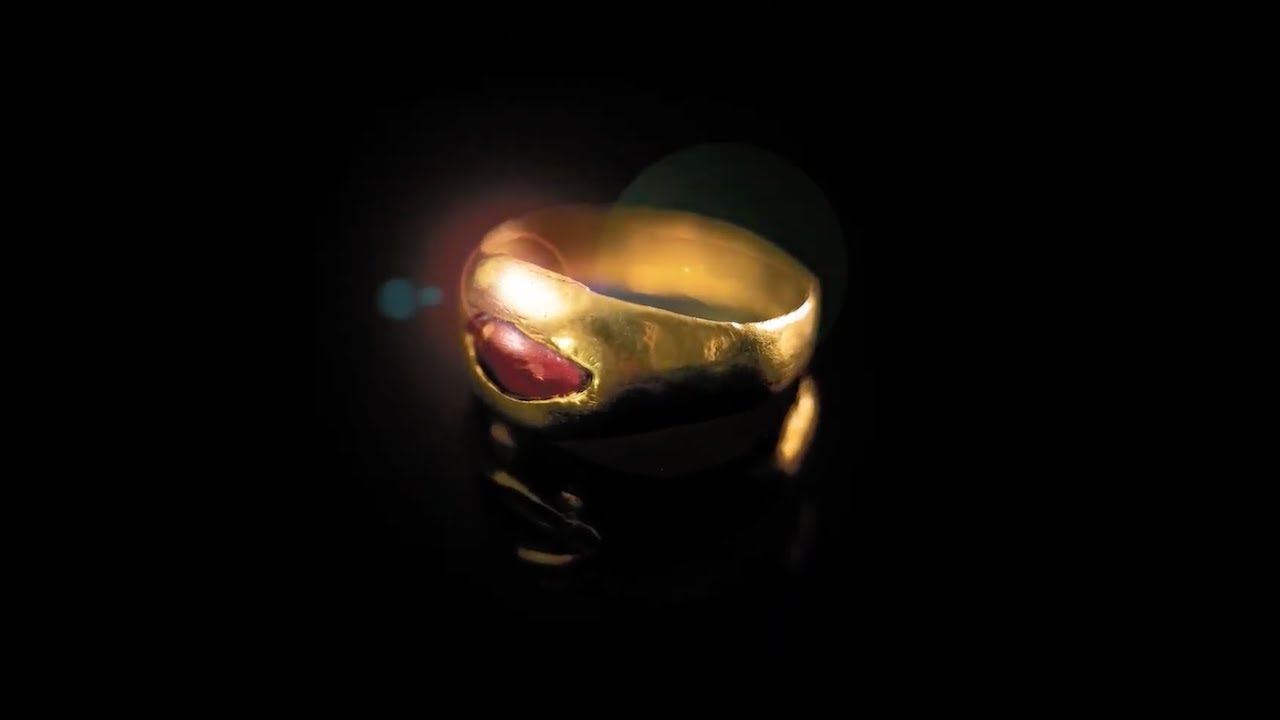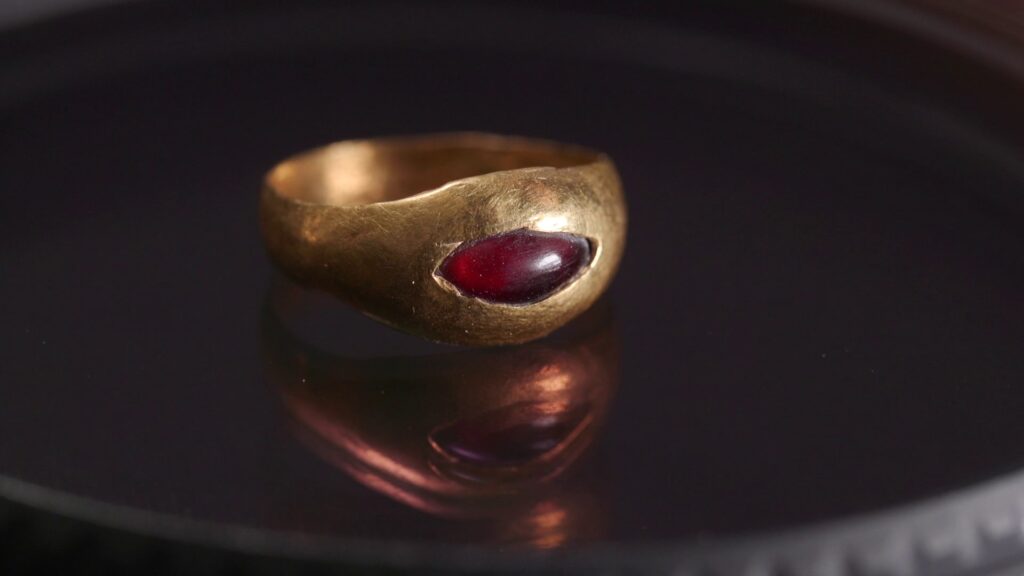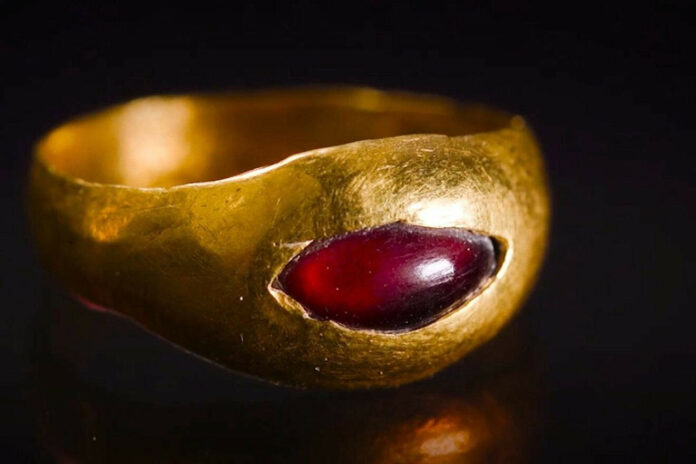In the heart of the ancient City of David, a significant archaeological discovery has captured the imagination of historians and enthusiasts alike. A gem-encrusted gold ring, dating back to the early Hellenistic period, was recently unearthed during an excavation by the Israel Antiquities Authority and Tel Aviv University. Funded by the Elad association, this remarkable find will be presented to the public for the first time at the “Jerusalem Mysteries” conference on Jerusalem Day.
The Ring and Its Journey

The exquisite gold ring, adorned with a red gemstone believed to be garnet, has remained astonishingly well-preserved over the past 2,300 years. The Israel Antiquities Authority announced that the discovery was a stroke of luck, credited to Tahya Gangata, a dedicated excavator in the City of David.
“I sifted the dirt through a sieve and suddenly I saw something shiny,” she recalled. “I immediately shouted: ‘I found a ring, I found a ring!’ Within seconds, everyone gathered around me, and the enthusiasm was palpable. It’s an exciting find that you don’t come across every day, and I’m thrilled that my dream came true—just a week before my maternity leave.” The small diameter of the ring suggests it was worn on a woman’s little finger or by a child in Jerusalem during the Hellenistic period. Dr. Yeftah Shalev and Ricky Zlot Har-Tov, the excavation managers from the Antiquities Authority, noted that the ring fits a child’s finger or a woman’s little finger. Dr. Marion Zindel explained that the ring was crafted using a braiding technique of thin, pre-cut gold le
 aves on a metal ring base, a style typical of the late 4th to early 3rd century BC.
aves on a metal ring base, a style typical of the late 4th to early 3rd century BC.
Professor Yuval Gadot from Tel Aviv University and Efrat Butzer, also leading the excavation, mentioned that this discovery joins other significant finds from the City of David, including a gold earring shaped like a horned animal and a decorated gold bead, both from the Hellenistic layers. These artifacts offer a new perspective on Jerusalem during the early Hellenistic period, suggesting it was a city of wealth and cultural exchange.
A Window into Hellenistic Jerusalem
Previously, researchers believed that Jerusalem during this era was a small, modestly populated city confined to the southeastern hill, known as the City of David. However, recent discoveries are reshaping this narrative.
The array of buildings and gold jewelry found in the Givat parking lot excavation site suggests a thriving urban center expanding westward, featuring both private and public constructions. These findings indicate a prosperous economy and the presence of a wealthy elite class. Additionally, the stylistic influences in the jewelry reveal an openness to Hellenistic cultural trends prevalent across the Eastern Mediterranean.
Gold jewelry from the Hellenistic world, beginning with Alexander the Great’s conquests, was often adorned with mythological figures or animals symbolizing various attributes. The preserved condition of the ring, due to gold’s resistance to corrosion, offers a pristine glimpse into the craftsmanship and aesthetic preferences of the period.
Public Unveiling and Further Research

The Israel Antiquities Authority (IAA) is eager to share these intriguing discoveries with the public. On Jerusalem Day, the “Jerusalem Mysteries” conference will offer free access to the public, providing insights into the latest archaeological innovations in the city.
Conclusion
The discovery of the Hellenistic gold ring in Jerusalem not only enriches our understanding of the city’s history but also highlights the richness of its cultural and economic life during the early Hellenistic period. As this and other artifacts are revealed to the public, they continue to paint a vivid picture of a thriving and cosmopolitan ancient Jerusalem.

